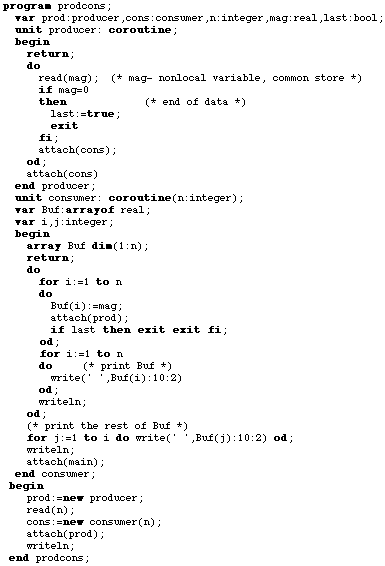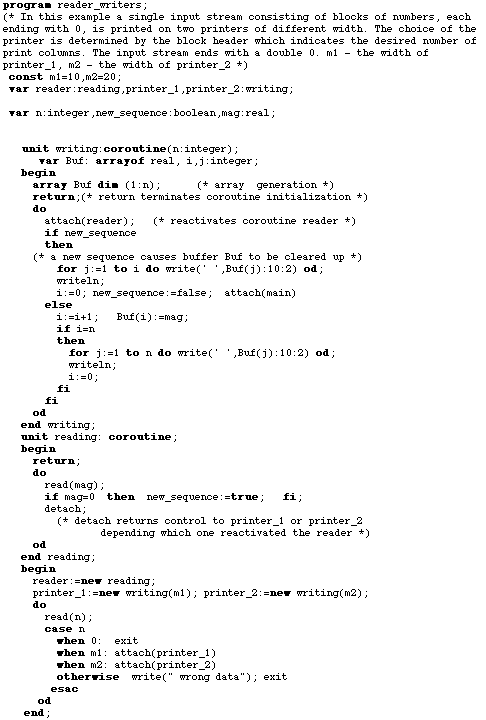 7) Coroutines and
semicoroutines
7) Coroutines and
semicoroutines 7) Coroutines and
semicoroutines
7) Coroutines and
semicoroutinesCoroutine is a generalization of class. A coroutine object is an object such that the execution of its sequence of statements can be suspended and reactivated in a programmed manner. Consider first a simple class with a sequence of statements such that after return some non-executed statements remain. The generation of its object terminates with the execution of return statement, although the object can be later reactivated. If such a class is declared as a coroutine, then its objects may be reactivated. This can be realized by an attach statement:
attach(X)
where X is a reference variable designating the activating coroutine object.
In general, since the moment of generation a coroutine object is either active or suspended. Any reactivation of a suspended coroutine object X (by attach(X)) causes the active coroutine object to be suspended and continues the execution of X from the statement following the last executed one.
Main program is also a coroutine. It is accessed through the standard variable main and may be reactivated (if suspended) by the statement attach(main).
Example:
In the example below the cooperation of two coroutines is presented. One reads the real values from an input device, another prints these values in columns on a line-printer, n numbers in a line. The input stream ends with 0.

Then

In the example below the application of detach statement is illustrated.
Example:

Coroutines play the substantial role in process simulation. Class Simulation provided in Simula-67 makes use of coroutines at most degree. LOGLAN-82 provides for easy simulation as well. The LOGLAN-82 class Simulation is implemented on a heap what gives lg(n) time cost (in contrast with O(n) cost of the original implementation). It covers also various simulation problems of large size and degree of complexity.